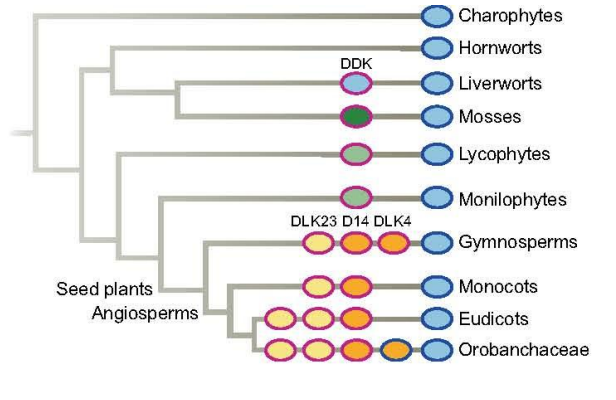
Review. Fellowship of the rings: a saga of strigolactones and other small signals (New Phytol)
Plant Science Research WeeklyStrigolactones are small signal molecules synthesized by plants. In the past few years, many studies highlighting the importance of this emerging phytohormone have been published. Strigolactones play important roles as a hormonal signals in plants and for mycorrhizal fungi interactions, they are present…

A CLE–SUNN module regulates strigolactone content and symbiosis (Nature Plants)
Plant Science Research WeeklyThe symbiosis between plants and arbuscular mycorrhizal fungi is conditional. Plants that are limited for phosphate release strigolactones into the soil, promoting changes in the fungi that facilitate the symbiosis. Müller et al. found that a Medicago gene encoding a CLE peptide, MtCLE53, is induced…
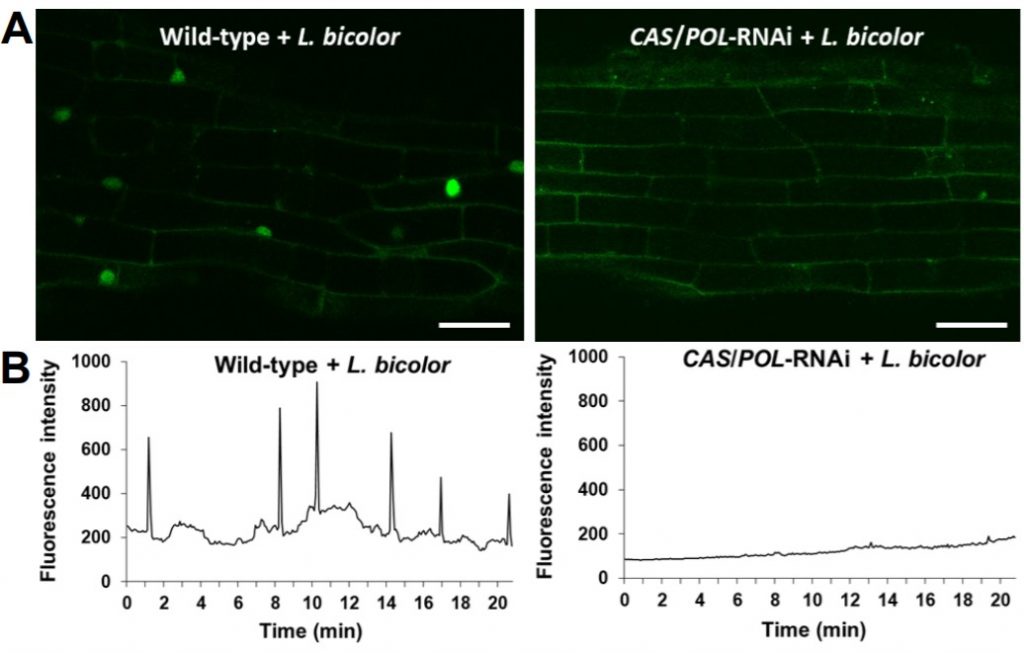
The ectomycorrhizal fungus Laccaria bicolor produces lipochitooligosaccharides and uses the common symbiosis pathway ($) (Plant Cell)
Plant Science Research WeeklyNutrient exchange during plant-fungal symbiosis allows assimilation of nutrients necessary for plant growth in a beneficial way. Several plants have evolved to form symbioses with mycorrhizal fungi and rhizobia bacteria that allow the plants to efficiently take up nitrogen and phosphorous. In its interactions…
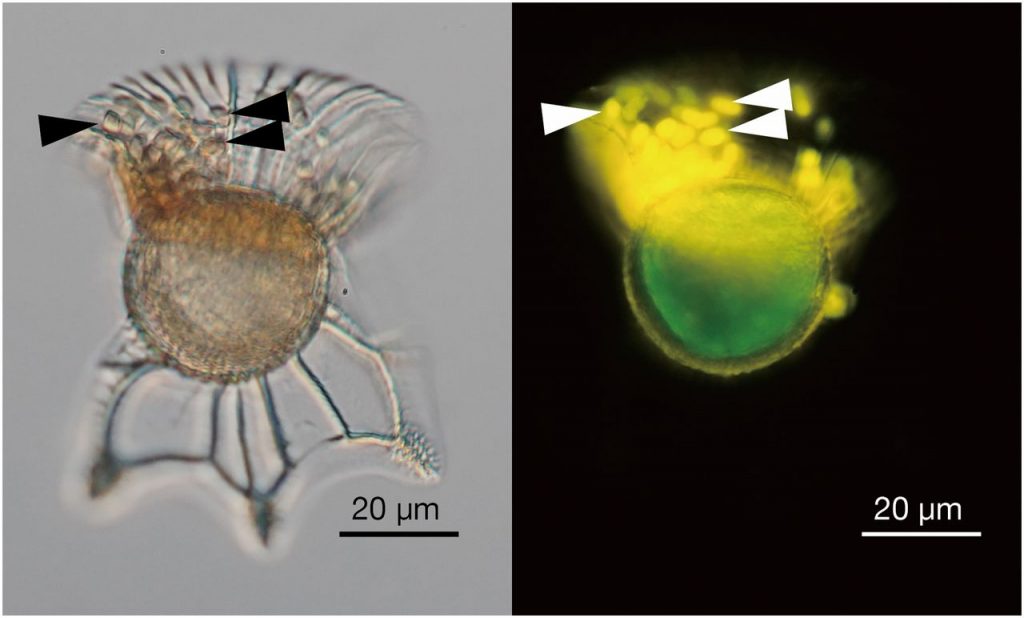
Single-cell genomics unveils an ectosymbiont cyanobacteria associated with a dinoflagellate host (PNAS)
Plant Science Research WeeklyCyanobacteria are important contributors to global carbon fixation. They can be free-living in many different environments, but also form close symbiotic associations with various eukaryotic organisms. Nakayama et al. have idea identified a new type of cyanobacteria that lives as an ectosymbiont in a…
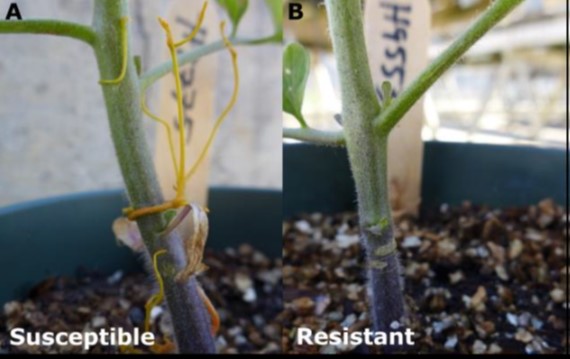
Lignin-based resistance to Cuscuta campestris in tomato (bioRxiv)
Plant Science Research WeeklyDodder (Cuscuta campestris) is a plant that parasitizes other plants by forming penetrating haustoria through which they tap into the host’s vascular tissues and extract nutrients. Most tomatoes are susceptible, but a few varieties are resistant. Jhu and Farhi et al. examined these resistant varieties…
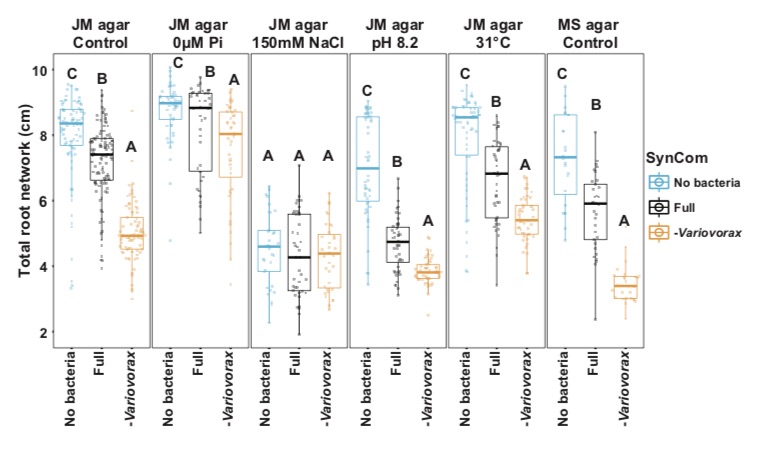
Root development is maintained by specific bacteria-bacteria interactions (bioRxiv)
Plant Science Research WeeklyUnderstanding plant-microbe and microbe-microbe interactions is challening. Both kinds of interactions have significant impacts on plant health and nutritional uptake. Finkel et al. address how microbe-microbe interactions shape plant phenotypes by using the synthetic microbial community (SynCom) consisting…

Update. GMO-free RNAi: exogenous application of RNA molecules in plants (Plant Physiol)
Plant Science Research WeeklyCriticism of transgenic plants and GMOs motivates research into effective GMO-free RNA delivery methods. In this review, Dalakouras et al. discuss different strategies for exogenous application of RNA molecules (dsRNAs, siRNAs) into plants to trigger RNA interference (RNAi) against various targets, such…
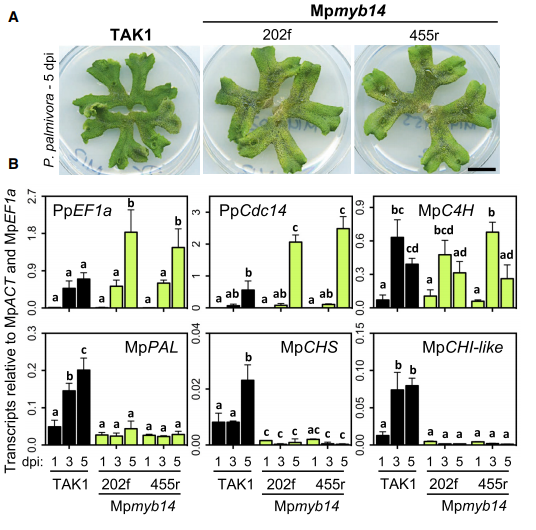
Conserved biochemical defenses underpin host responses to oomycete infection in liverwort (Curr Biol)
Plant Science Research WeeklyMarchantia polymorpha is an emerging model for plant molecular biology and has contributed to studies on development and plant-microbe interactions. Here, using RNA-seq and proteomics, Carella et al. present a detailed time-course analysis of Marchantia molecular responses to pathogen infection triggered…
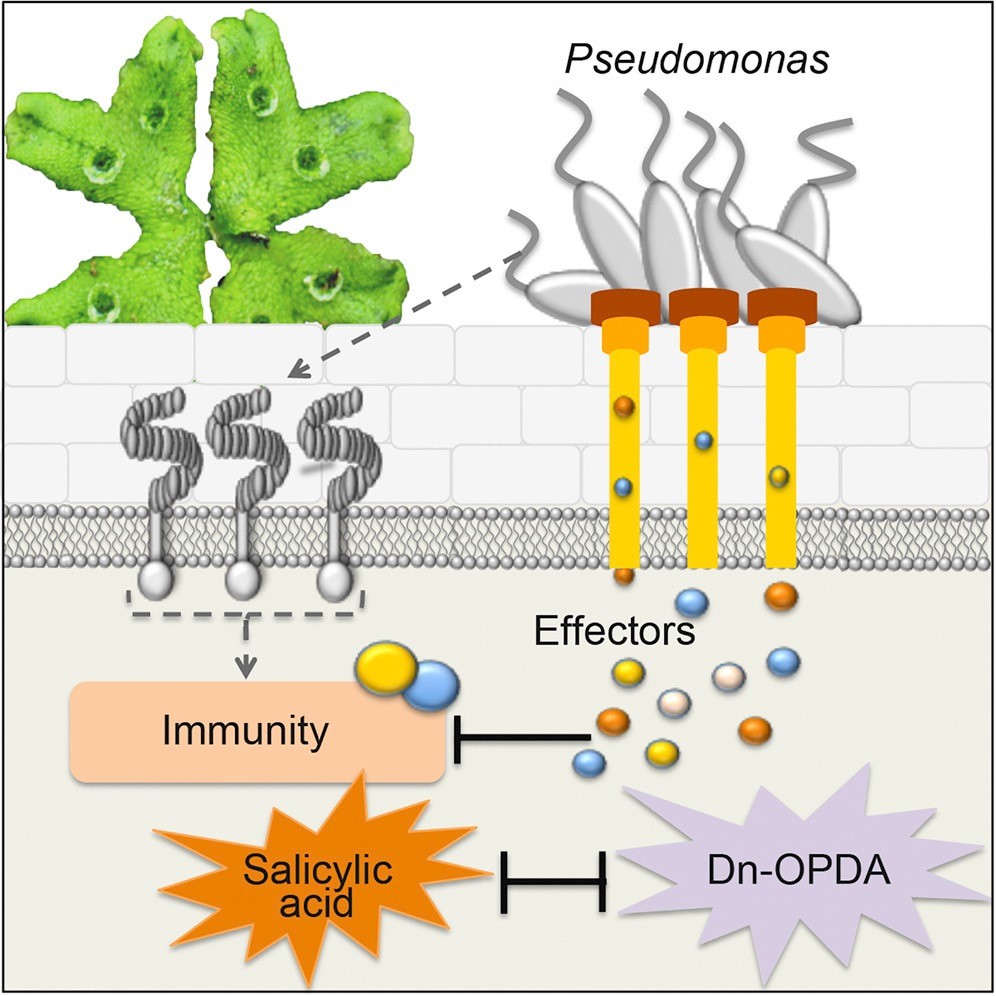
A liverwort-Pseudomonas interaction reveals an ancient plant defensive mechanism (Curr Biol)
Plant Science Research WeeklyPlants are sessile organisms that have evolved sophisticated immune systems in defense of pathogens, thus maximizing the chance of survival. Most of our understanding of plant defenses comes from studies in angiosperms. Evolutionary molecular plant-microbe interactions (EvoMPMI) can reveal the origins…

